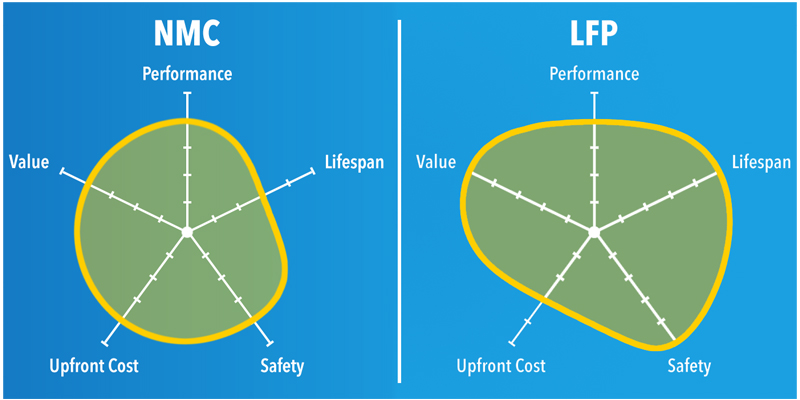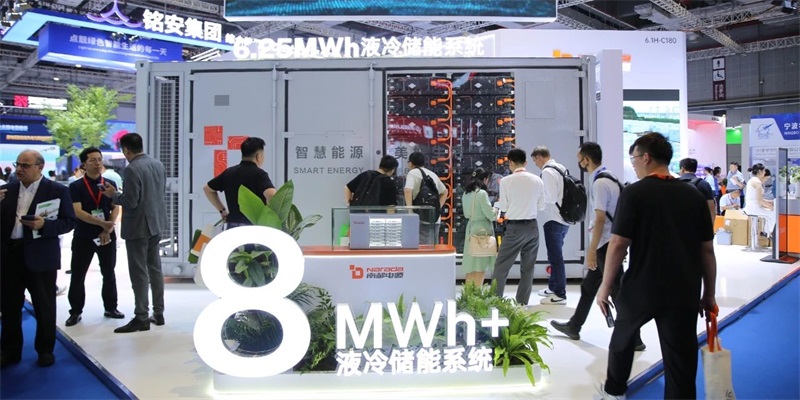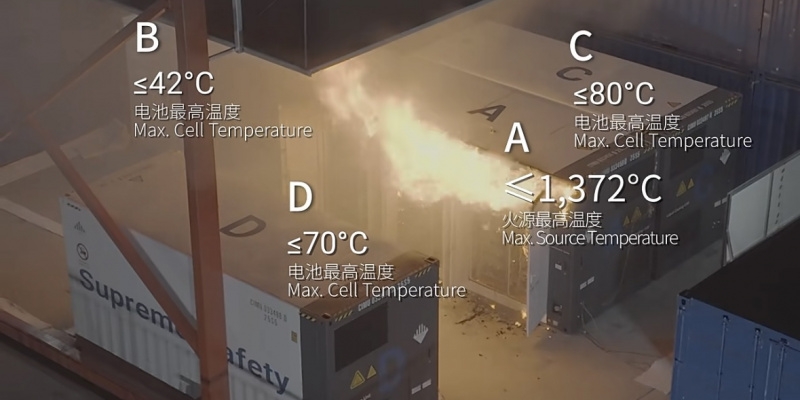LFP vs NMC Battery: The Ultimate Guide to Choosing the Right Energy Storage Solution
In the rapidly evolving era of new energy, lithium-ion battery technology has become the core of energy storage solutions. Among them, Lithium Iron Phosphate (LFP) and Nickel Manganese Cobalt (NMC) batteries, each with their unique advantages, are fiercely competing across multiple application scenarios, including home energy storage and electric vehicles.

What Is An LFP Battery?
An LFP (LiFePO4) battery is a stable but less energy-dense type. Its iron-phosphate cathode materials are cheaper and more abundant than NMC's cobalt. LFP batteries are also less toxic, making them easier to recycle.
Many companies now prefer LFP for home energy storage due to their safety and stability.
What Is An NMC Battery?
An NMC (NiCoMn) battery offers high energy or power density, making it ideal for power tools and EVs. While initially cheaper, NMC batteries may require replacement over time.
NMC batteries have been linked to fire risks, prompting companies like Tesla to switch to LFP for electric vehicles.
NMC vs LFP: What Is The Difference?
| Item | LFP Battery | NMC Battery |
Voltages | 3.20, 3.30V nominal; typical operating range 2.5–3.65V/cell | 3.60V, 3.70V nominal; typical operating range 3.0–4.2V/cell, or higher |
Specific energy (capacity) | 90–120Wh/kg | 150–220Wh/kg |
Charge (C-rate) | 1C typical, charges to 3.65V; 3h charge time typical | 0.7–1C, charges to 4.20V, some go to 4.30V; 3h charge typical. A charge current above 1C shortens battery life. |
Discharge (C-rate) | 1C, 25C on some cells; 40A pulse (2s); 2.50V cut-off (lower that 2V causes damage) | 1C; 2C possible on some cells; 2.50V cut-off |
Cycle life | 2000 and higher (related to depth of discharge, temperature) | 1000–2000 (related to depth of discharge, temperature) |
Thermal runaway | 270°C (518°F) Very safe battery even if fully charged | 210°C (410°F) typical. High charge promotes thermal runaway |
Cost | ~$200 per kWh | ~$420 per kWh |
Applications | ESS, EVs, etc | E-bikes, medical devices, EVs, industrial |
1. Performance
Both NMC and LFP batteries offer similar performance and are available in capacities ranging from 0.5 kWh to over 100 kWh. For most home energy storage needs (~10 kWh), either type will suffice.
However, there are slight differences:
· LFP batteries are slightly more efficient and perform better at lower states of charge.
· NMC batteries handle colder temperatures better, though this is less relevant if installed indoors or in mild climates.
· NMC has higher energy density, meaning a smaller physical size for the same capacity—useful where space is limited.
2. Lifespan
· LFP batteries typically last 6,000+ cycles.
· NMC batteries usually last 800–1,000 cycles.
· This makes LFP far more cost-effective over time.
3. Safety
· LFP batteries are significantly safer due to their stable chemistry, reducing the risk of thermal runaway and fire.
· NMC batteries are more prone to overheating if overstressed or improperly handled, requiring professional installation for risk mitigation.
4. Cost & Value
· NMC batteries have a lower upfront cost but a shorter lifespan.
· NMCLFP batteries may cost slightly more initially but offer 3x better value per cycle due to their longevity.
5. Charge-Discharge Curve
· NMC batteries have a voltage-based SOC, allowing for precise state-of-charge monitoring.
· LFP batteries have a flat voltage curve, making SOC estimation more challenging.
How to Choose the Right Battery for Your Needs
1. Cost Considerations
· Upfront Costs: LFP batteries are 20-30% cheaper per kWh than NMC, though total system integration savings are typically 5-15% initially.
· Long-Term Value: LFP's longer lifespan often makes it more cost-effective over time despite the smaller initial price gap.
2. Operational Advantages
· Temperature Tolerance: LFP operates reliably across a wider temperature range and doesn’t require refrigerated shipping, simplifying logistics.
· Discharge Rates: LFP generally supports 1C continuous operation, while NMC often needs specialized (and costly) power batteries for high-rate (1C) applications.
3. Market Trends
While NMC retains strong brand recognition, LFP technology is rapidly catching up in performance and adoption. Once customers approve an LFP product, transitioning to newer models is often seamless.
4. Final Recommendation
For most users, LFP is the better choice due to its lower costs, safety, and longevity. However, NMC may still suit niche applications where compact size or cold-weather performance is critical.

